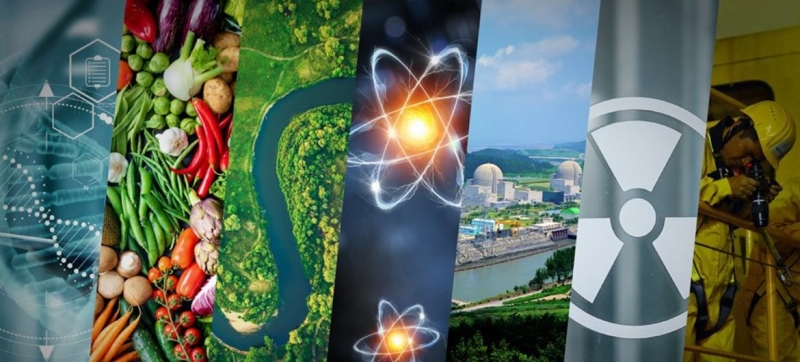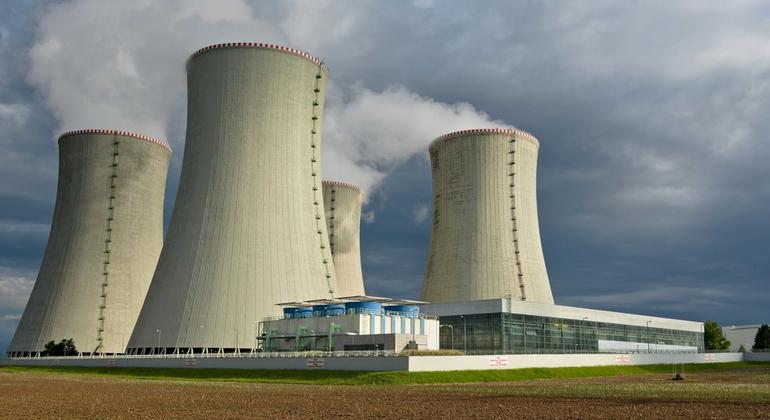
Over the past decade, technologies related to artificial intelligence have developed rapidly, becoming increasingly complex. Seven areas where AI will change science and technology Economic development
Over the past decade, technologies related to artificial intelligence have developed rapidly, becoming increasingly complex and allowing us to solve increasingly difficult problems. AI is used in various industries such as manufacturing, shipping, finance, education and healthcare.
Likewise, AI can help advance nuclear science, technology, and applications. Using the power of AI in the nuclear field can make a significant contribution to solving the most pressing problems of our time – from combating climate change to ensuring food security.
Below are several areas in which artificial intelligence can be useful for peaceful applications of nuclear technology in the present and future. You can learn more about them from the new IAEA publication “Artificial Intelligence for Accelerating the Application of Nuclear Technologies, Science and Technology.”
1. Human health
AI can help treat various diseases. It is already used in the diagnosis and treatment of cancer: thanks to improved image processing quality and precise determination of tumor contours, AI allows for the development of more accurate treatment plans and the use of adaptive radiation therapy, that is, treatment taking into account the anatomical characteristics of a particular patient. The use of AI technologies for cancer treatment is being studied in many countries around the world, including China, Russia, the United Kingdom, the United States and France. The IAEA recently launched a coordinated research project in this area.
AI will also play an important role in the IAEA’s Integrated Action for Zoonotic Disease Control (ZODIAC) initiative to help experts better understand the impact of zoonotic diseases on human health, and predict, assess, and control future outbreaks of such diseases.
2. Food and Agriculture
The use of AI in combination with nuclear technologies can help improve the resilience of food systems and their ability to withstand climate change, as well as address food insecurity.
Experts are using AI to process and analyze data to improve crop yields, estimate soil moisture, improve irrigation systems, detect and predict food fraud, and remediate radioactively contaminated land.

3. Water Resources and the Environment
Isotope techniques allow experts to study and monitor the movement of water through different stages of the hydrological cycle, as well as changes in this cycle caused by climate change. Experts are already using AI-based approaches to rapidly analyze large volumes of water-related isotope data stored in international databases such as the Global Precipitation Isotopes Network, maintained by the IAEA and the World Meteorological Organization.
Effective and efficient data analysis using AI helps scientists better understand climate change processes and their impact on water availability around the world.
4. Nuclear Science and Fusion Research
Artificial intelligence is playing an increasingly important role in nuclear science. It is used for data analysis, theoretical modeling and experimentation, helping to advance technological innovation and accelerate basic research, such as nuclear and atomic data acquisition and analysis.
Research in the field Nuclear fusion is the area where the application of AI brings the greatest benefits. With its ability to solve large-scale and complex problems, AI can facilitate experiments and scientific discoveries through modeling and simulation. These AI applications are included in a new five-year IAEA Coordinated Research Project aimed at accelerating fusion research and development.

5. Nuclear energy
Nuclear energy, a reliable, low-carbon energy source, can significantly benefit from AI. By combining digital simulations of real nuclear plants with AI systems, complex nuclear industry procedures can be optimized and reactor design, performance and safety improved. Such optimization can improve operational efficiency and reduce maintenance costs.
Machine learning, a process by which A.I. learns by analyzing large amounts of data. In addition, AI has significant analytical and predictive potential to monitor processes in power plants and identify anomalies.
2021 data presented during the AI for Nuclear Power webinar highlights the potential for AI to reduce plant operating and maintenance costs. An emergency shutdown of a turbine generator at a nuclear power plant in Russia costs the operator an average of 1 million euros per day. Instead, predictive control using AI can help initiate planned shutdowns, significantly reducing costs and the number of unplanned shutdowns.
6. Nuclear Safety and Radiation Protection
As more countries use nuclear technology for peaceful purposes and implement nuclear energy development programs, the IAEA continually works to ensure that people and the environment are protected from potential harmful effects of ionizing radiation.
AI can be useful in ensuring nuclear safety and security. It can be used in processing data from radiation monitoring systems to more effectively detect and identify nuclear and other radioactive materials. AI can also be used to analyze data from physical protection systems and detect intruders or anomalies that could indicate a cyber attack on a nuclear facility. In addition, the integration of AI into software related to radiation safety standards could help improve the protection of millions of workers exposed to occupational exposure in medicine, construction, mining, shipping, agriculture and nuclear power.
7. Nuclear Safeguards
Safeguards are technical verification measures by which the IAEA provides reliable evidence that countries are complying with their legal obligations to use nuclear material exclusively for peaceful purposes. Through measures such as inspections of nuclear facilities and installations, the IAEA reviews states’ declared nuclear materials and nuclear activities to identify undeclared activities.
IAEA safeguards are based on large volumes of data obtained by various methods, such as satellite imagery, environmental sampling, gamma-ray spectroscopy and video surveillance. AI can help IAEA safeguards inspectors and analysts analyze this data. Machine learning techniques are already being used to analyze large volumes of data to detect emissions and help in the verification of spent fuel and CCTV footage. AI is expected to further improve the efficiency and reliability of assurances by reducing the number of repetitive tasks performed by inspectors.
